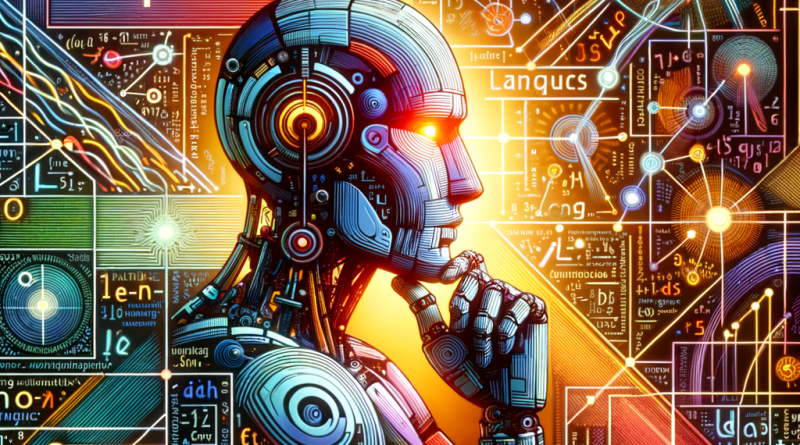Title: Inside the Mind of Claude 35 Haiku How Advanced AI Models Think Plan and Reason

Understanding Claude 3.5 Haiku: How AI ‘Thinks’ Beyond Just Next Token
If you’ve ever chatted with a language model and thought, “How does it come up with that?” — you’re not alone. The good news is, Anthropic is offering answers. In a groundbreaking new study, the team at Anthropic has opened the curtain on how their Claude 3.5 Haiku model internally processes language. Spoiler alert: it’s not just one word at a time.
🔍 Tracing the Thoughts of Claude 3.5
Anthropic published two technical papers explaining a novel methodology that reveals how Claude “thinks” during text generation. This involves tracing circuits of feature activations across transformer layers — basically, seeing how different parts of the model light up and work together as it talks.
Main Takeaways:
- Tracks activations: Traces how internal “neurons” activate through model layers.
- Identifies cause-effect: Matches inputs to internal reactions and final outputs.
- Concept mapping: Connects higher-level thinking like math and reasoning across internal layers.
- Language-agnostic data: Confirms abstract ideas are shared across languages before they’re turned into tokens.
🧠 Forward Thinking: Planning Multiple Tokens Ahead
This is where it gets mind-blowing. Claude 3.5 doesn’t just guess the next word — it’s already picked a few future ones. In rhyme tasks and sentence constructions, researchers found Claude pre-selects words and structures long before generating them token by token.
| Intervention | Effect on Generation |
|---|---|
| Remove selected word (e.g. “rabbit”) | Claude swaps for alternative (e.g. “habit”) |
| Inject new concept (e.g. “green”) | Claude rewrites entire sentence contextually |
🌍 Multilingual Brains: Same Concepts, Any Language
Claude 3.5 doesn’t think in English or French. Instead, it activates the same internal concepts regardless of the input language. When you ask, “What’s the opposite of small?” in English, Spanish, or Arabic, the same neural features light up. The only difference comes at the very end — how the model translates those ideas into words.
Example:
- “Opposite of small” — English → triggers same neural pathways as → “Contrario de pequeño” — Spanish
- Output differs: “Big” in English, “Grande” in Spanish — core thinking path is identical.

➕ Calculating with Parallel Paths
When asked something like “What’s 43 + 29?”, Claude activates multiple distinct computation strategies internally — one pathway may estimate, and another calculates individual digits. This is different from the school-taught method it might explain in its answer.
| Internal Strategy | Description |
|---|---|
| Estimate Sum | Approximates total value quickly |
| Digit Calculation | Adds each digit accurately (units, tens, etc.) |
| Output Explanation | Describes school-style algorithm |
🔗 Compositional Reasoning: Multi-step Inference Mapped
Claude doesn’t just jump to conclusions. If asked “What’s the capital of the state where Dallas is located?”, Claude internally first processes Dallas → Texas and then Texas → Austin before replying with “Austin”.
When researchers injected “California” in place of “Texas” mid-process, the output changed to “Sacramento”. This shows that Claude doesn’t just remember answers — it reasons step-by-step through inference chains.
🤖 Why This Matters
AI interpretability has traditionally been a black box, but Anthropic’s research offers a flashlight into the machine’s neural maze. Understanding how models like Claude 3.5 work helps developers, researchers, and policymakers design safer, more accountable AI systems. It also helps catch critical issues such as hallucinations or biases early in development.
📢 What Experts Are Saying
“Being able to visualize how language models craft poetry or make decisions brings AI safety from abstract theory to real mechanisms.”
– Koji
“A real game changer. It helps pinpoint where hallucinations happen, improving reliability.”
– Chris Cheung
🔮 What’s Next?
Anthropic hasn’t yet open-sourced the tracing tools themselves, but the methodology represents a powerful step forward. As models grow more advanced and integrate into critical systems (think medical AI, autonomous vehicles), this kind of transparency becomes mission-critical.
You can read the full paper here.
🔗 Resources
- Official Claude Documentation from Anthropic
- ArXiv preprint: Tracing Computation in Large Language Models
- Stanford AI Index Report
Enjoyed this article? Share it with your community!
📢 Hashtags:
#ClaudeAI #Anthropic #AIInterpretability #LanguageModels #MultilingualAI #AIExplainability #Transformers #MachineLearning #DeepLearning #ConversationalAI #FutureOfAI
